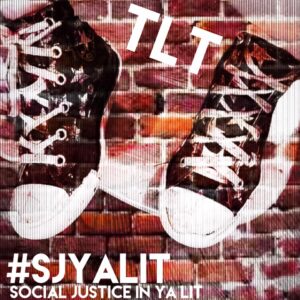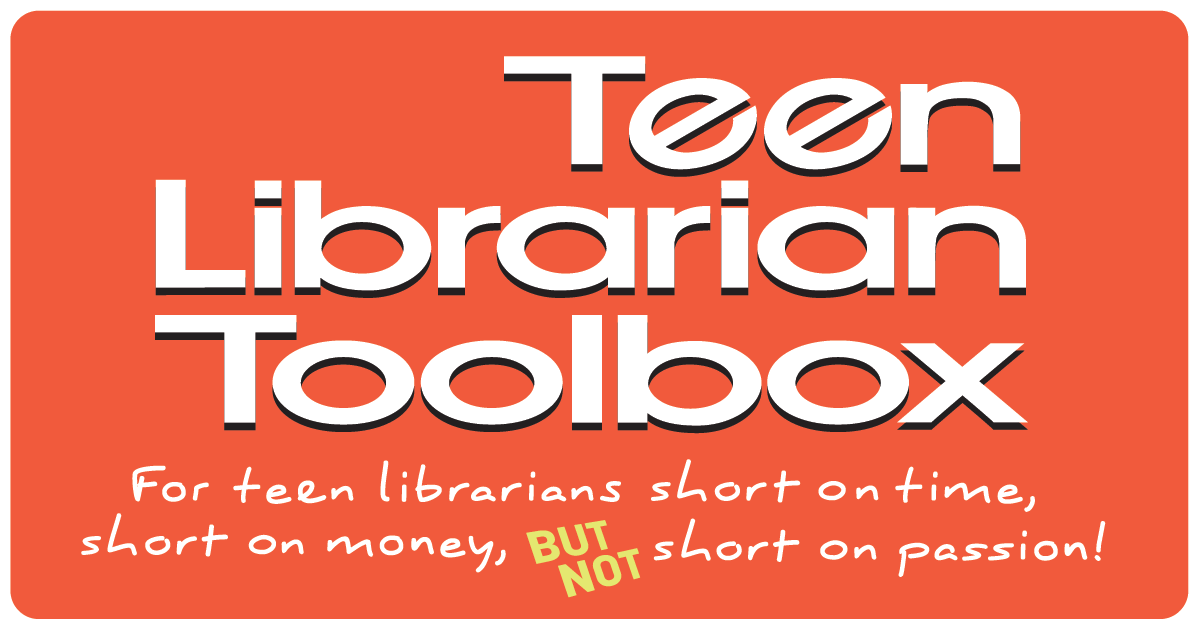SJYALit: More Social Justice Reading in Schools, a guest post by Alex B.
 6th grade (and any grade) can be great. YA literature can be great. Educators, librarians, writers, publishers, and other advocates can be great. In a time of uncertainty, it is helpful for me to say so! Also, you’re here, reading this, as part of Teen Librarian Toolbox’s Social Justice in YA Lit project. That’s great, too. I have posted about my experience with LGBT literature and social justice reading in a 6th grade classroom, and I want to share a little more. It seems important to use my voice, carve out space for self-reflection, and keep thinking and moving forward.
6th grade (and any grade) can be great. YA literature can be great. Educators, librarians, writers, publishers, and other advocates can be great. In a time of uncertainty, it is helpful for me to say so! Also, you’re here, reading this, as part of Teen Librarian Toolbox’s Social Justice in YA Lit project. That’s great, too. I have posted about my experience with LGBT literature and social justice reading in a 6th grade classroom, and I want to share a little more. It seems important to use my voice, carve out space for self-reflection, and keep thinking and moving forward.
In answering the question, “what would I add to a curriculum that includes social justice in its texts and readings?” I originally came up with the following list of relatively new books that celebrate diversity in theme or authorship.
ADVERTISEMENT
ADVERTISEMENT
Alexander, K. (2014). The crossover. New York, NY: HMH Books for Young Readers.
Written in verse, the front jacket states, “in this heartfelt novel, basketball and brotherhood intertwine to show Josh and Jordan that life doesn’t come with a playbook and, sometimes, it’s not about winning.” There is strong appeal in the two brothers’ personalities and relationships, in addition to the mentions of LeBron or 2 Chainz and the inclusion of text messages, but the emotional depth is the major strength of the book. I have seen firsthand the excitement this book and author inspires in children, young adults, and teachers and librarians alike at an author presentation in a public library, and the content and structure of the book would tie into curriculum themes and learning standards well.
Engle, M. (2015). Enchanted air: Two cultures, two wings: A memoir. New York, NY: Atheneum Books for Young Readers.
This memoir told in verse begins by introducing readers to Margarita Engle’s parents’ story and then opens with “Magical Travels, 1951-1959” which chronicles her first trips to Cuba, progressing through “Winged Summer, 1960,” “Strange Sky, 1961-1964,” and finally “Two Wings, 1965,” when the author is fourteen. Many chapter titles and phrases throughout are dual language, such as “Hasta Pronto/Until Soon” (p. 116). It is very important, describing her coming-of-age, historical events, and conflict over gender and ethnicity well. I like the open and explorative tone with use of figurative language and the complex coming-of-age issues discussed, and it would be a great book to use in teaching connections to other texts.
Kostecki-Shaw, J. S. (2011). Same, same but different. New York, NY: Henry Holt.
Two boys, Kailash and Elliot, become pen pals in art class, drawing pictures of their worlds and sending them from India to America and vice versa. They describe their families, alphabets, favorite classes, hobbies, and landscapes and repeat the phrase “same, same but different” until the phrase is inverted at the end. The statement, “we’re best friends…even though we live in two different worlds. Or do we?” is a wonderful reflection on the lines we draw. The repetition of the title as a line throughout is great for reading aloud. This is a picture book that I would recommend including in curriculums for older students, as its content and structure are useful in discussing themes that could eventually lead to better understandings of social justice.
Myers, W. D. (2009). Looking like me. New York, NY: EgmontUSA.
Jeremy lives in Harlem and creates an “I am” list of his identities. He fist bumps everyone who helps him with his list. This is another picture book I would include in curriculum or programming for older students, in addition to or as a connection to his previous popular text Monster (HarperCollins, 1999).
Tonatiuh, D. (2014). Separate is never equal: Sylvia Mendez and her family’s fight for desegregation. New York, NY: Harry N. Abrams.
ADVERTISEMENT
ADVERTISEMENT
This book is has won numerous awards, including a Pura Belpré Illustrator Honor in 2015. As Sylvia starts at a desegregated school in California, 1947, she reflects back on the last three years and her father’s part in filing a progressive lawsuit. A beautifully told, important true story with lovely illustrations, the book also includes an author’s note, photos of Sylvia, her parents, and the schools, a glossary, and a bibliography. Quotes from the superintendents and from the educational specialists involved in the case show both the prejudice involved as well as the need for public education’s celebration of diversity. Sylvia is relatable yet inspiring and is a strong girl for readers to meet. It is the third and final picture book that I would recommend using in curriculums at different levels, if the theme involves social justice reading.
Woodson, J. (2014). Brown girl dreaming. New York, NY: Nancy Paulsen Books.
Told in verse poems in five parts with photos at the end, the artistic autobiography begins with Woodson’s memory of learning to write, discusses 1960s and 70s experiences with race in the north versus south, and ends with a class presentation of her poetry and affirming final poems about identity and beliefs. I had read Jacqueline Woodson’s The House You Pass on the Way (1997) and considered it for inclusion in classroom lessons or a classroom library, and she continues to write important books. This seems especially accessible and easy to include in lessons!
I am still not sure what book I would choose to include that focuses on social justice for LGBT people – Jacqueline Woodson’s The House You Pass on the Way (1997) would be one option – but I want to. The nice thing, in my reflection, was that there are a lot of options – in so many areas – to choose from. One of my undergraduate education courses gave out a list of “multicultural adolescent literature ideas,” and it would be many, many pages longer now if it was updated with YA lit published in the last few years. In a recent article, Temple (2017) writes (http://lithub.com/if-fiction-changes-the-world-its-going-to-be-ya/), “YA can tackle social issues head-on, without any fears of seeming didactic or overwrought because as a genre, it doesn’t have the same kind of baggage. Literary fiction, despite all our claims that it opens our hearts to one another, is just not the best genre for engineering social change.” The end of the article states, “So whether in explicit protest novels, fiction as resistance, or simply by loudly representing underrepresented voices, it’s YA that has the best chance to jump on that ‘wave of popular energy’ and lead us all to a better world. Or at least, I hope so.”
The next step would be to make sure these books are included in curriculums, shared in schools, libraries, bookstores, and other spaces, and used in creative and powerful ways.
Bio:
Alex B. is an aspiring librarian in a Master’s of Library and Information Science + K-12 program. She’s gay and has a goofy sense of humor. She can read, is testing her ability to write, and is so-so at talking. She does love to listen so you can connect with her via email (absjyalit at gmail.com) or comment here with your stories or thoughts!
Filed under: #SJYALit
About Robin Willis
After working in middle school libraries for over 20 years, Robin Willis now works in a public library system in Maryland.
ADVERTISEMENT
ADVERTISEMENT
SLJ Blog Network
The Moral Dilemma of THE MONSTER AT THE END OF THIS BOOK
Cover Reveal and Q&A: The One and Only Googoosh with Azadeh Westergaard
K is in Trouble | Review
Parsing Religion in Public Schools
ADVERTISEMENT








Wow! Another plethora of suggestions! These all sound great and it helps to have a professional perspective of what would be effective. Thank you.